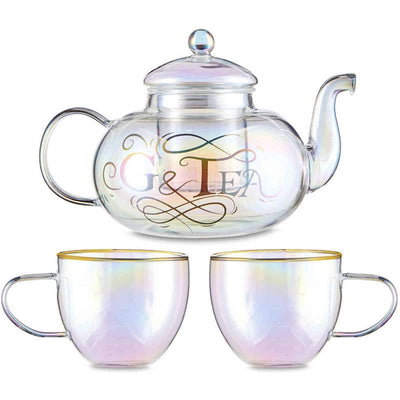Why should you decant wine?
Whether it’s a family affair or an evening spent in with friends, a red wine or a white, wine is both an important and social aspect amongst many of the population, joining us along the way during many special moments in our lives. But with so much choice and even more dos and don'ts, it can become increasingly daunting for those wishing to learn more as they start their own foray into the world of wine.
And so the question remains, “where should I begin?”
A good place to start begins before the wine has been served, but has already been purchased. After choosing your favourite wine, an ideal place to start would be through a process called decanting. A wine decanter is a glass pitcher or container for you to pour any of your wines in, most notably a red, and the benefit is an improved taste, especially if you are somebody who regularly buys more affordable wine as it can truly transform and improve the flavour.
Many wines can have a seemingly unpleasant aftertaste, and what contributes to this is the sediment that gathers at the bottom of the wine bottle as it sits on its shelf. The older and richer the wine, the more sediment that is likely to gather, be it as a vintage red or fruity port. Decanting old wine and decanting red wine is extremely popular for this very reason, as it is more likely to form sediment compared to a white wine or lighter option.
An easy way to eliminate this issue is through the process of wine decanting.
To decant a wine, you should first leave the unopened wine bottle sat upright for a few hours (24 hours if the wine is older), ensuring that what sediment that is present will sink to the bottom (this is incredibly important if you store your wine horizontally, such as in a wine cellar or a rack). Once this is complete, you simply pour the still wine slowly and steadily into another container, to avoid interfering with the said sediment in the bottle. This container would be your decanter of choice. The closer you get to the bottom of the bottle, the slower you should pour as you don’t want the sediment to make its way into the decanter. As soon as you can see sediment reaching the neck of the bottle or you see the newly poured wine appearing cloudy in any way, this is your sign to stop pouring. What you will be left with is a far purer liquid, free of gritty texture.
As the wine begins to decant you’ll also be introducing oxygen to the liquid. Through this process, the wine begins to breathe, softening the tannins and expanding the once-dormant flavours that have been preserved in the bottle. It can then be placed on the table amongst guests, stylishly ready for whenever you need a glass, and then easily stored for another night. Once decanted you’ll not only have improved the taste, but you will have somewhere to store what is or may be left over/ a stylish display for any dinner, party or event.
When choosing amongst many wine decanters, the options can be overwhelming, so ideally the best wine decanter will have both space for aeration and also be compact for storage. Hence the introduction of Drinkind slim wine decanter.

Created with both practicality and style in mind, our modern wine decanter is designed to be laid flat when wine is being poured into it, meaning that the liquid is given more space than the average wine carafe. This in turn oxygenates it faster, improving taste quicker. It can then be placed standing tall, just as you would a normal bottle of wine; ready to be poured and ready to be stored.
This is incredibly useful for the red wine enthusiast, as it acts as both a wine aerator as well as decanter. But don’t be confused; it can be used both as a white wine decanter as well as to decant red wine. It all just depends on how you prefer your wine.







